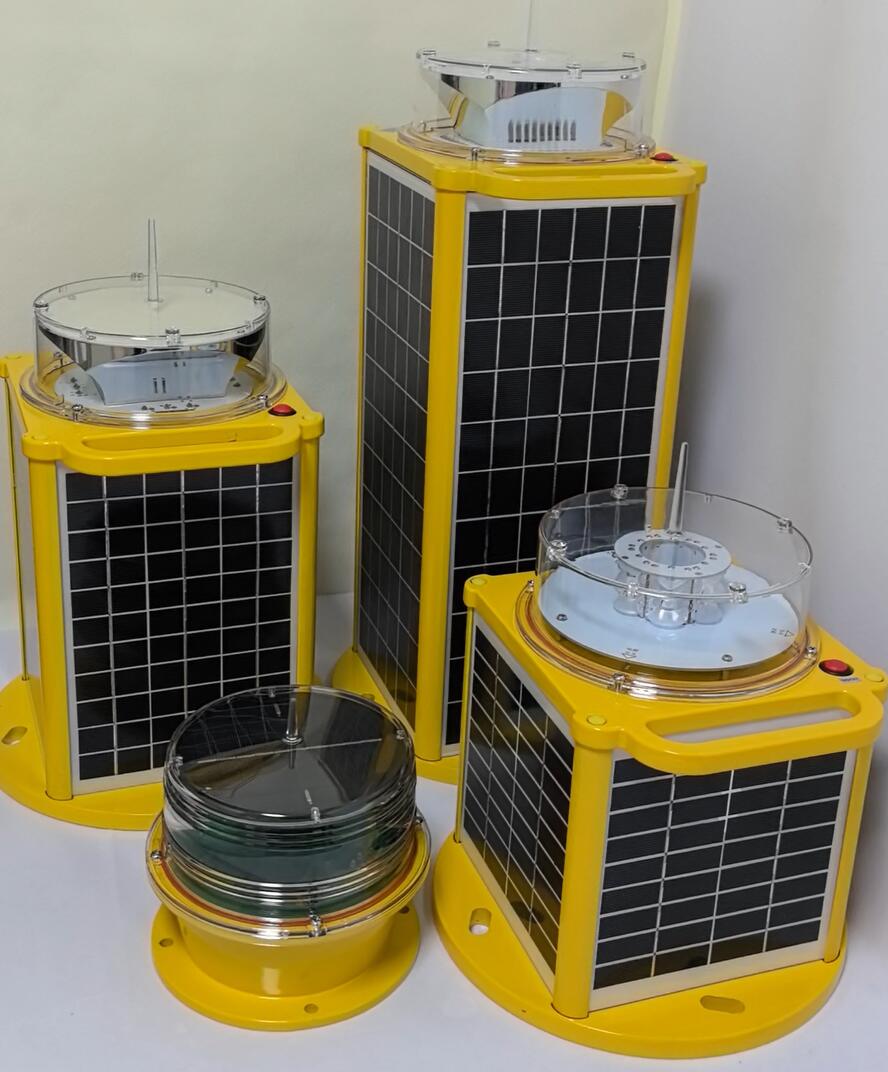Solar Powered Aircraft Warning Lights: Illuminating Safety with Autonomy and Green Technology
The ever-expanding tapestry of human infrastructure—marked by skyscrapers, telecommunication masts, and sprawling wind farms—has fundamentally altered the lower airspace. These structures, essential for modern life, also present formidable obstacles to aviation. The critical technology that mitigates this risk is the aircraft warning light. However, in an age increasingly defined by sustainability and operational efficiency, a new paradigm has emerged: solar powered aircraft warning lights. This innovation is more than a simple power source swap; it represents a fundamental shift towards autonomous, environmentally conscious, and highly reliable safety systems that are reshaping the industry.
The core mandate remains unchanged: to prevent collisions by making obstacles visible to pilots of both manned and unmanned aircraft. Traditional warning lights relied on hardwired electrical connections, requiring extensive trenching, cabling, and connection to the power grid. This approach often presented significant logistical and financial challenges, especially for structures in remote, inaccessible, or environmentally sensitive locations. The advent of solar powered aircraft warning lights elegantly bypasses these hurdles. By harnessing the sun's abundant energy, these systems achieve complete energy independence, making them viable for virtually any location on the planet that receives sunlight, from a remote mountaintop telecom tower to an offshore wind turbine far out at sea.

The technological brilliance of these systems lies in their integrated, self-sustaining ecosystem. A typical unit is a marvel of engineering synergy, comprising four key components:
Photovoltaic (PV) Solar Panel: High-efficiency panels, often made from monocrystalline silicon for optimal energy conversion, are designed to capture maximum solar radiation throughout the day. Their durability is crucial, capable of withstanding hail, high winds, and prolonged UV exposure.
| solar powered aircraft warning lights |
High-Capacity Lithium Battery Bank: Energy captured during daylight hours is stored in sophisticated, deep-cycle batteries. Modern lithium-ion (LiFePO4) batteries are preferred for their long lifespan, high energy density, and excellent performance across a wide range of temperatures, ensuring reliable power through nights and periods of prolonged poor weather.
Energy-Efficient LED Light Array: The load this system must power is itself a model of efficiency. Light Emitting Diodes (LEDs) consume a fraction of the power of older incandescent or halogen bulbs while producing superior luminosity. Their long operational life, often exceeding 100,000 hours, minimizes maintenance needs.
Intelligent Charge Controller: The brain of the operation, this microprocessor-based unit manages the flow of energy. It regulates the charging of the batteries to prevent overcharging or deep discharge, both of which can damage the system. It also often includes light-sensing capabilities to automatically switch the LEDs on at dusk and off at dawn.
This synergy allows solar powered aircraft warning lights to operate with remarkable autonomy. Modern systems are engineered for "dark sky" compliance, meaning they remain off during daylight to conserve energy and eliminate visual pollution, only activating when needed. Their operational readiness is calculated to provide weeks of continuous illumination, even without a single hour of sunlight, ensuring unwavering safety during winter months or extended cloudy periods.
The advantages of this technology are multifaceted and compelling:
Rapid Deployment and Reduced Installation Costs: Without the need for trenching, cabling, and electrical subcontractors, installation becomes dramatically faster, simpler, and less disruptive. A system can often be mounted directly onto a structure in a matter of hours.
Ultra-Low Operational Carbon Footprint: By using a clean, renewable energy source, these systems eliminate CO2 emissions associated with their operation, aligning perfectly with global sustainability goals and corporate environmental, social, and governance (ESG) policies.
Enhanced Resilience and Reliability: They are immune to power grid failures and blackouts. This makes them exceptionally reliable sentinels, particularly in regions prone to unstable electricity supply or natural disasters, where their continuous operation is most critical.
Minimal Lifetime Maintenance: The solid-state nature of LEDs and the durability of the components mean these systems require very little upkeep. Occasional cleaning of the solar panel and a battery replacement every 5-10 years are typically the only requirements.
The applications for solar powered aircraft warning lights are vast and growing. They are the default solution for marking obstacles in remote areas, such as pipelines, power transmission lines, and radio masts. They are indispensable for temporary structures like construction cranes, where connecting to grid power is impractical. In the renewable energy sector, they are used to mark wind turbines and are even being integrated into the design of next-generation solar farm fencing and monitoring masts. Furthermore, their autonomy makes them ideal for emergency and disaster response operations, where rapid setup of marked safe zones for helicopter operations is essential.
Looking forward, the integration of smart technology and IoT (Internet of Things) principles is the next frontier. Future iterations of solar powered aircraft warning lights will likely feature remote monitoring and control. Maintenance crews could receive automatic diagnostic reports on system health, battery status, and performance directly to their computers or smartphones, enabling predictive maintenance and further enhancing reliability. As airspace becomes denser with drones and new forms of urban air mobility, the demand for a decentralized, intelligent, and eco-friendly obstacle lighting network will only intensify.
In conclusion, solar powered aircraft warning lights are far more than a niche alternative. They are a transformative technology that embodies the principles of sustainability, resilience, and intelligent design. By divorcing critical safety infrastructure from the grid, they provide a robust, flexible, and future-proof solution for safeguarding our airspace. They stand as silent, self-sufficient guardians, powered by the sun, ensuring that humanity's reach skyward does not come at the expense of safety or the environment.
